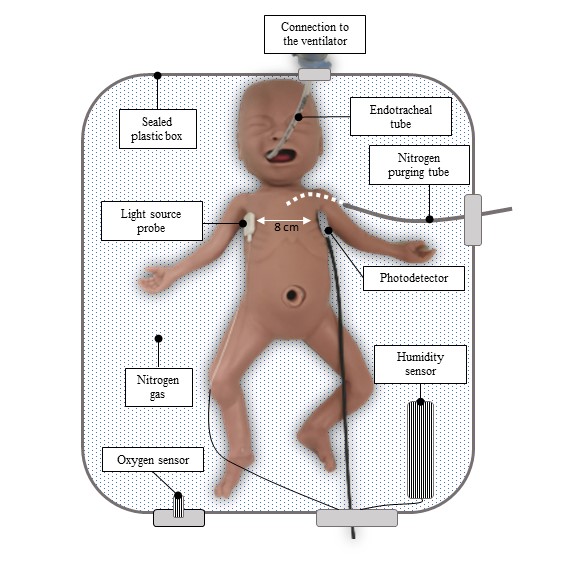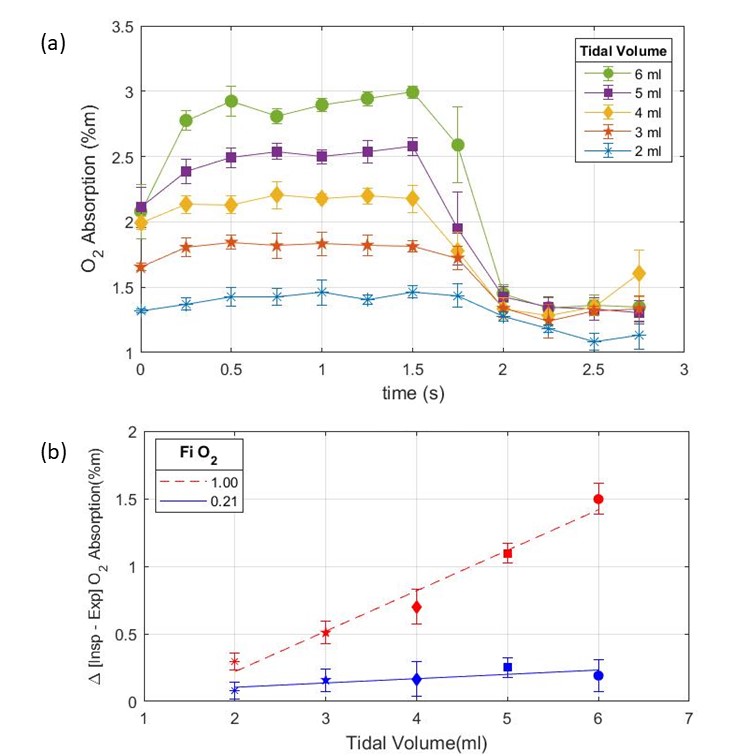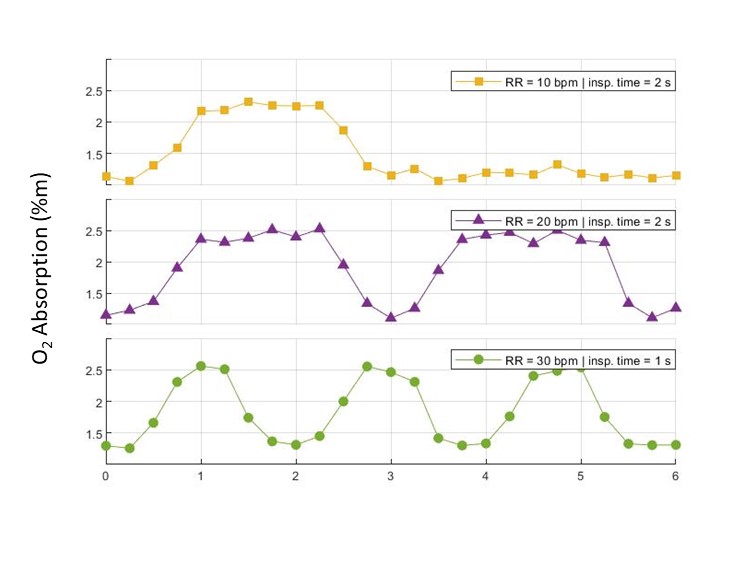Neonatal Respiratory Assessment/Support/Ventilation
Neonatal Respiratory Assessment/Support/Ventilation 2: Physiology 1
337 - Lung gas volume monitoring using GASMAS in neonatal mannequin
Publication Number: 337.345
.jpg)
Jurate Panaviene, MD
Clinical Research Fellow
INFANT Research Centre, University College Cork
Cork, Cork, Ireland
Presenting Author(s)
Background:
Current ventilation strategies in preterm neonates have become more centered around mimicking physiological breathing. Optimal neonatal ventilation now focuses on individualized tidal volume (TV) minimizing barotrauma and volutrauma. Gas in Scattering Media Absorption Spectroscopy (GASMAS) is a novel optical technology that non-invasively derives information about lung gasses, specifically oxygen, by measuring light absorbed by the gas molecules.
Objective:
This experimental study aimed to evaluate the utility of GASMAS to assess lung gas volume changes during different phases of the respiratory cycle.
Design/Methods:
A mannequin simulating a 25-week gestational age neonate (Premature Ann®, Leardal, Norway) was connected to neonatal ventilator (SLE5000, SLE, UK) via a size 2.5 endotracheal tube. The GASMAS measurements were performed using a NEOLA Alpha 2 device (NEOLA Medical, Sweden) with two tunable laser sources operating at 760 and 935 nm, with a sampling frequency of 4 Hz. Figure 1 shows the position of the light source probe and a photodetector over mannequin’s chest. The ventilator was set to targeted tidal volume mode and GASMAS measurements were repeated for a range of five TVs: 2ml, 3ml, 4ml, 5ml, and 6ml. Each was performed with 0.21 and 1.0 fractions of inspired oxygen (FiO2). In addition, set of measurements was performed using variable respiratory rates of 10, 20 and 30 breaths per minute.
Results:
Delivery of incrementally increasing TV resulted in increasing magnitude of oxygen absorption during inspiration with mean oxygen absorption of 0.43 (±0.03) %m, 0.44 (±0.03) %m, 0.52 (±0.07) %m, 0.6 (±0.04) %m and 0.64 (±0.08) %m for TV of 2 ml, 3 ml, 4 ml, 5 ml, and 6 ml respectively. The observed changes were more pronounced at each TV when FiO2 was increased from 0.21 to 1.0 with mean oxygen absorption during inspiration increasing from 1.4 (±0.03) %m to 2.8 (±0.13) %m (Figure 2). Oxygen absorption patterns corresponded with breathing phase: increased during inspiration, decreased during expiration, and matched respiratory rate (Figure 3).
Conclusion(s):
This is the first study that has evaluated the ability of GASMAS to detect changes in lung oxygen during dynamic tidal volume targeted ventilation. We demonstrate that in a simulated preterm infant lung model, GASMAS detects the difference between tidal volume changes, inspiratory and expiratory phases of respiration and oxygen concentration. GASMAS has potential clinical application for non-invasive more accurate respiratory monitoring of ventilated neonates.


